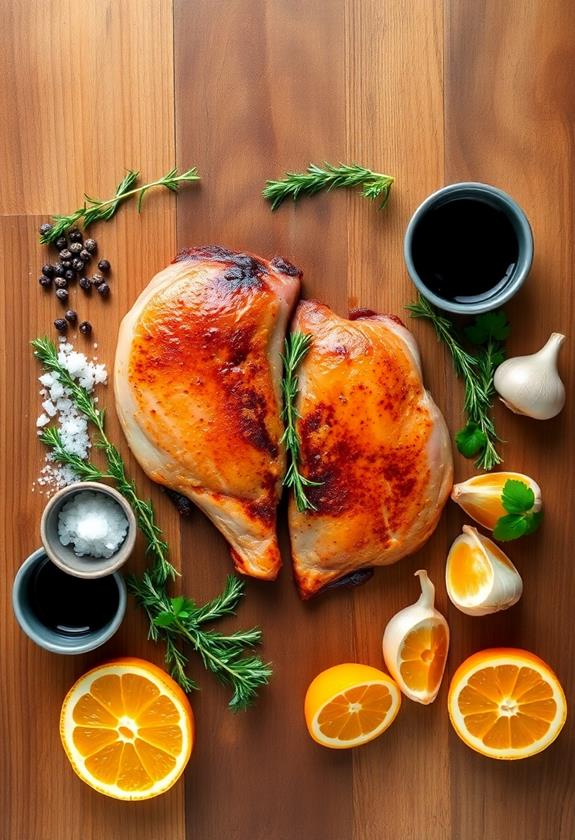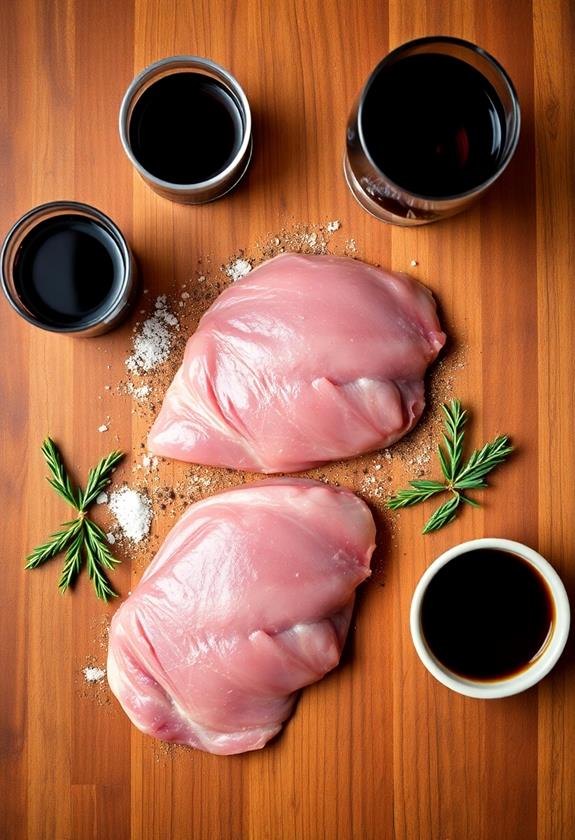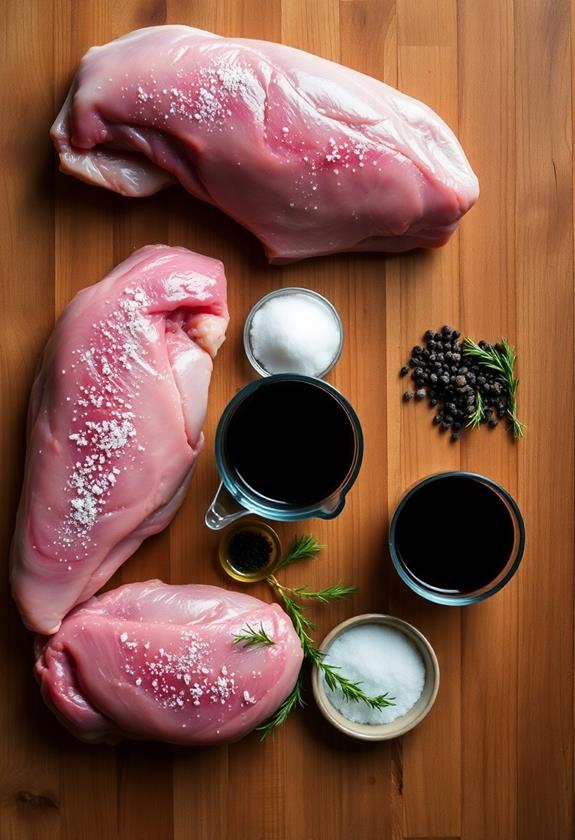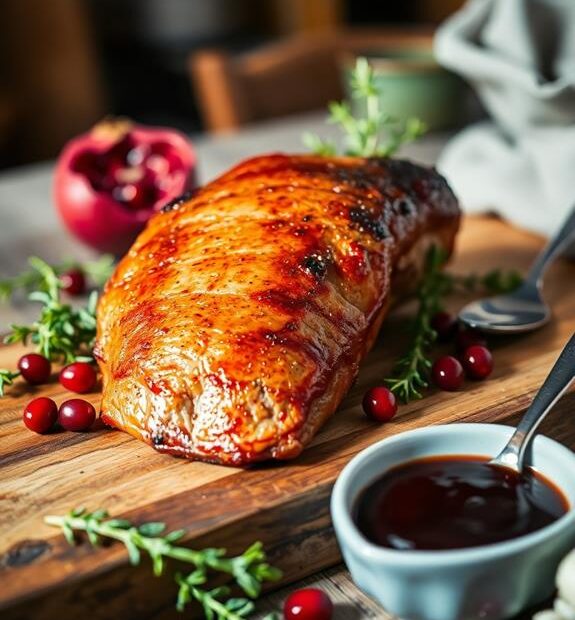Magret de Canard, or seared duck breast, is a dish that's sure to impress your guests! �� To make it, score the skin, season the duck breasts, and sear them in a cold pan for about 8 minutes, then flip and cook for another 4 until they're juicy and perfect. Why not try pairing it with a fruity sauce like cherry or orange? �� The flavors blend beautifully! After letting it rest, slice against the grain for tender bites. Want to learn how to create the perfect sauce or add side dishes? There's more to this delightful recipe!
History

Magret de Canard has its roots in the 1950s, thanks to Chef André Daguin, who championed the Moulard duck for its exceptional flavor and tenderness. With its rich taste and juicy texture, this dish is often enhanced by a perfect glass of fresh juice, showcasing the health benefits of freshly extracted flavors that complement the savory notes of the duck juicing technology and features.
Have you ever tasted a dish that just leaves you wanting more? That's the magic of Magret de Canard! This classic French cuisine features seared duck breast, often served *medium-rare* to keep it juicy and delicious.
Chef Daguin's focus on quality ingredients and precise culinary technique changed how many people view duck. It's not just a meal; it's an experience. You might notice that Magret de Canard is often paired with fruit-based sauces, like cherry or orange. These sweet and savory elements create a delightful blend of *sucré-salé* flavors.
Isn't it fascinating how food can tell a story?
As its popularity grew, Magret de Canard became a staple in French cooking, showcasing the beautiful *flavor profiles* that define the cuisine. This dish not only represents tradition but also invites you to explore modern interpretations of duck recipes.
Recipe

Recipe
Magret de Canard, a classic French dish, features duck breast that's known for its rich flavor and tender meat. The key to a perfect Magret is the preparation and cooking technique, which focuses on rendering the fat from the skin while ensuring the meat remains juicy and flavorful. This dish is often paired with a sauce that complements the duck's natural richness, making it an impressive entrée for any dinner.
For a delightful smoking experience that can enhance the flavors of your duck, consider using a charcoal smoker, as it allows for precise temperature control and stable cooking conditions, essential for achieving perfectly cooked meats every time. the best charcoal smokers can help you achieve that smoky richness.
To start your Magret de Canard, you'll need to select high-quality duck breasts, preferably from Moulard ducks. The preparation process begins with scoring the skin in a cross-hatch pattern, which aids in fat rendering and enhances the overall texture. Once seasoned with salt and pepper, the ducks are cooked in a way that maximizes the crispy skin while maintaining a juicy interior.
Ingredients
- 2 duck breasts (Magret de Canard)
- Salt
- Pepper
- 1 cup red wine
- 1 cup demi-glace
Cooking Instructions
Begin by scoring the skin of the duck breasts in a cross-hatch pattern and seasoning both sides generously with salt and pepper.
Place the duck breasts, skin side down, in a cold pan and turn the heat to medium. Sear the duck for about 8 minutes, allowing the fat to render and the skin to become crispy.
Once the skin is golden and crispy, flip the breasts over and cook for an additional 4 minutes, ensuring the internal temperature reaches 135°F for medium-rare.
Remove the duck from the pan and let it rest for 5-10 minutes before slicing against the grain.
Meanwhile, deglaze the pan with red wine and demi-glace, scraping up the browned bits, and reduce the sauce to intensify the flavors.
Extra Tips
When scoring the skin, be careful not to cut into the meat itself, as this can lead to drying out during cooking.
Remember to use a meat thermometer for accuracy, as the resting time will allow the temperature to rise slightly, achieving that perfect medium-rare.
Experiment with different sauces, such as adding fruit preserves or balsamic vinegar to the reduction, to find a flavor profile that complements the duck to your liking.
Enjoy your Magret de Canard with a side of roasted vegetables or a light salad for a complete meal.
Final Thoughts

Preparing Magret de Canard is more than just a cooking process; it's a culinary experience that showcases the rich flavors of duck breast. When you choose Magret Duck Breast, you're in for a treat! The key to success lies in how you handle that glorious fat and skin. By scoring the fat in a cross-hatch pattern, you guarantee a crispy exterior that seals in juiciness.
To enhance your cooking experience, consider investing in a high-quality griddle, such as the Presto models that offer adjustable temperature settings and PFAS-free nonstick surfaces for healthier meal prep Presto griddles.
Start cooking in a cold pan over medium heat, allowing the fat to render slowly—this usually takes about 8 minutes. Flip it over for another 4 minutes until it reaches that perfect internal temperature of 135°F (57°C). Ever tried deglazing the pan with red wine? It adds a depth of flavor that truly elevates your dish.
Remember to slice the duck against the grain into half-inch pieces for maximum tenderness. Pair it with seasonal veggies or a fruity sauce for a balanced meal.

